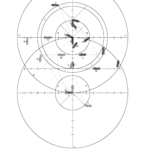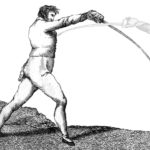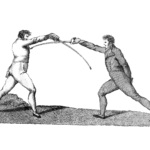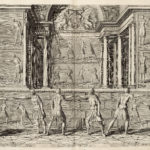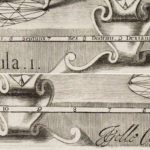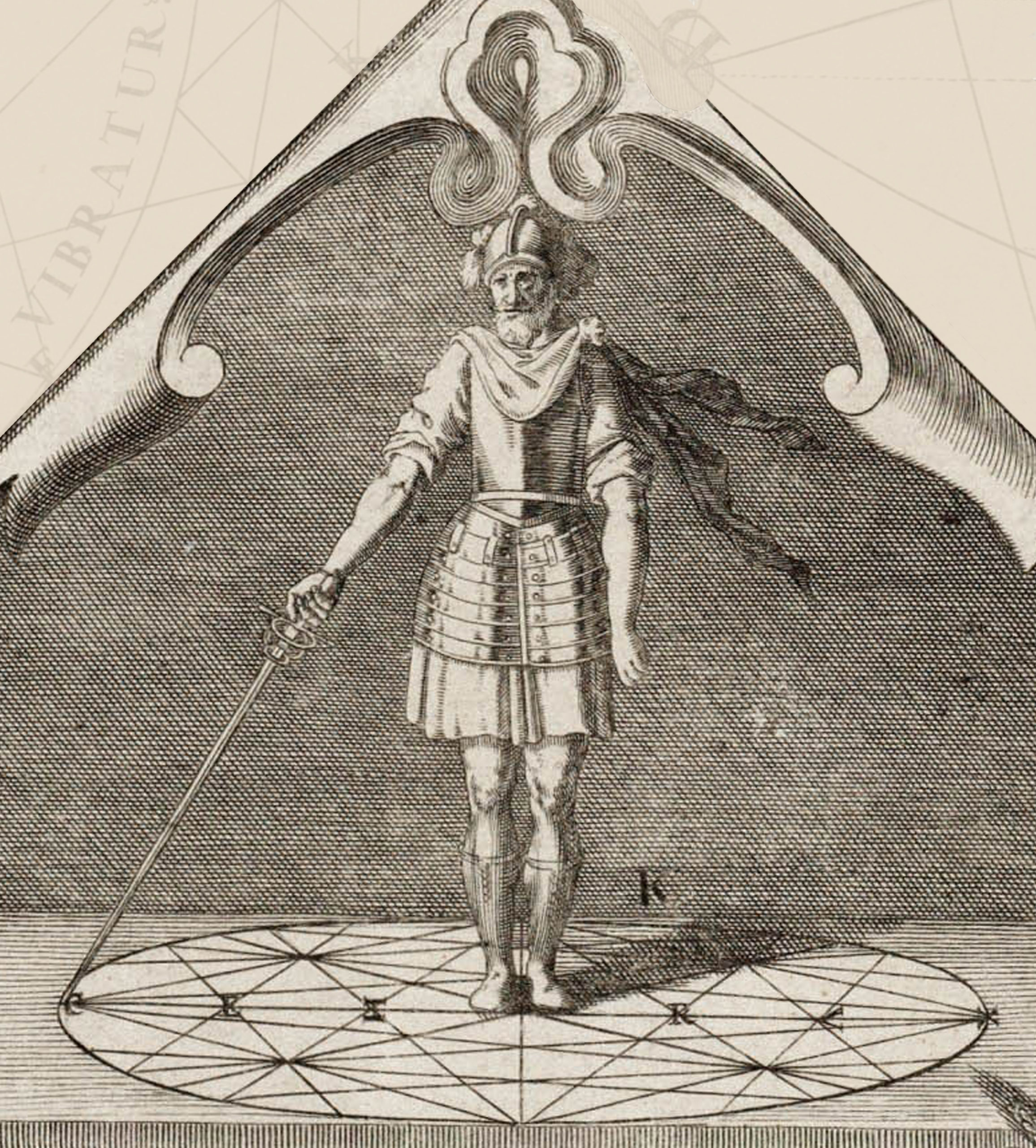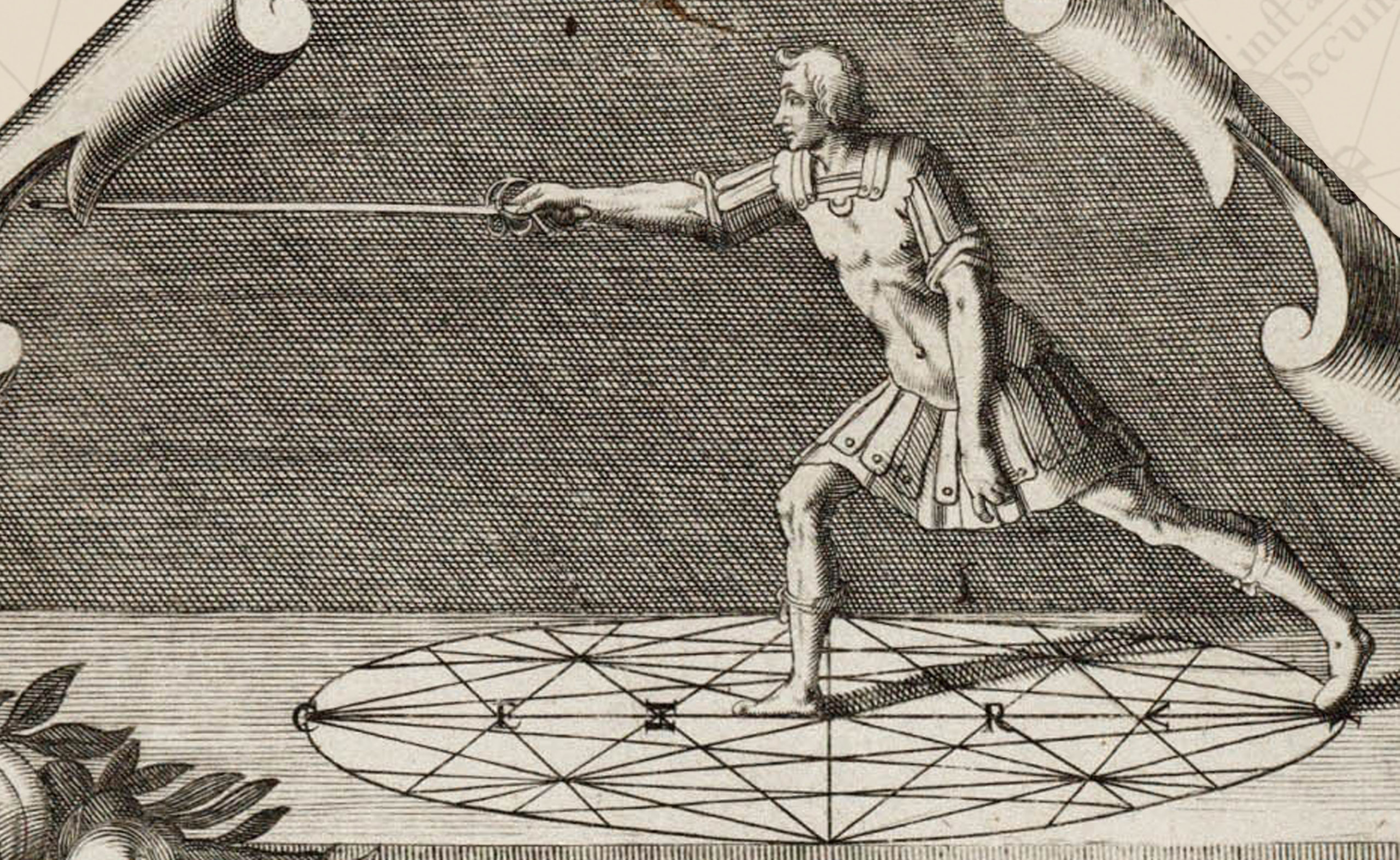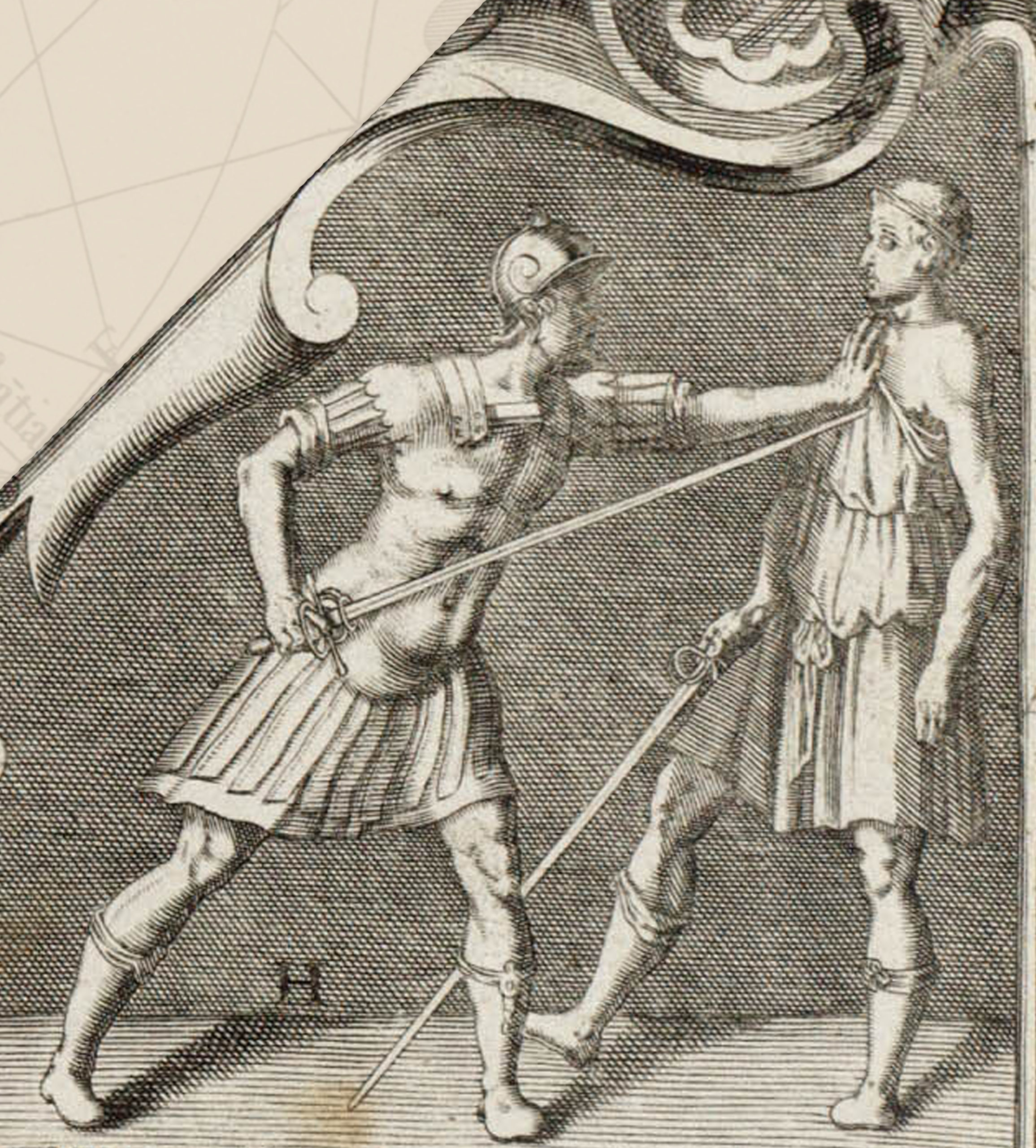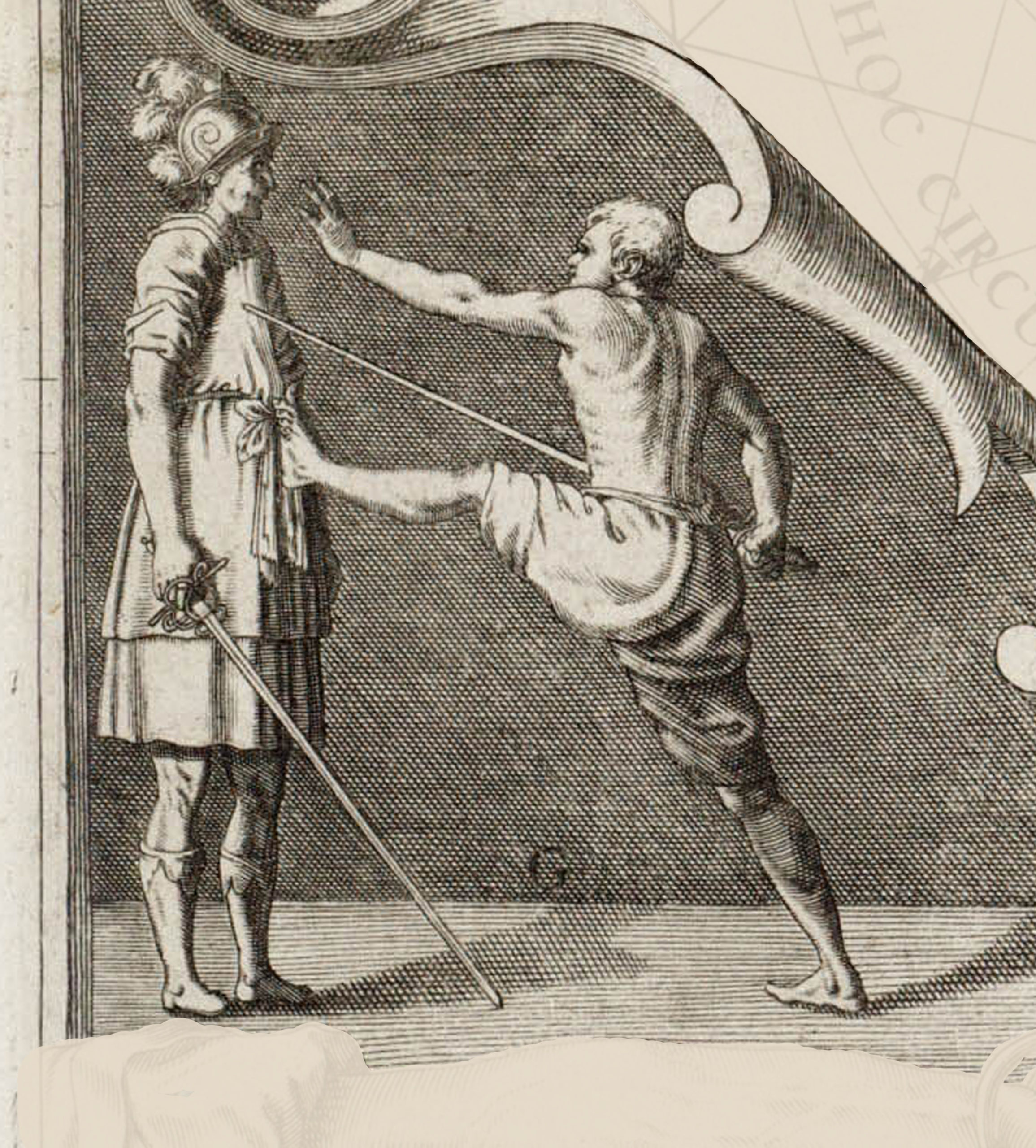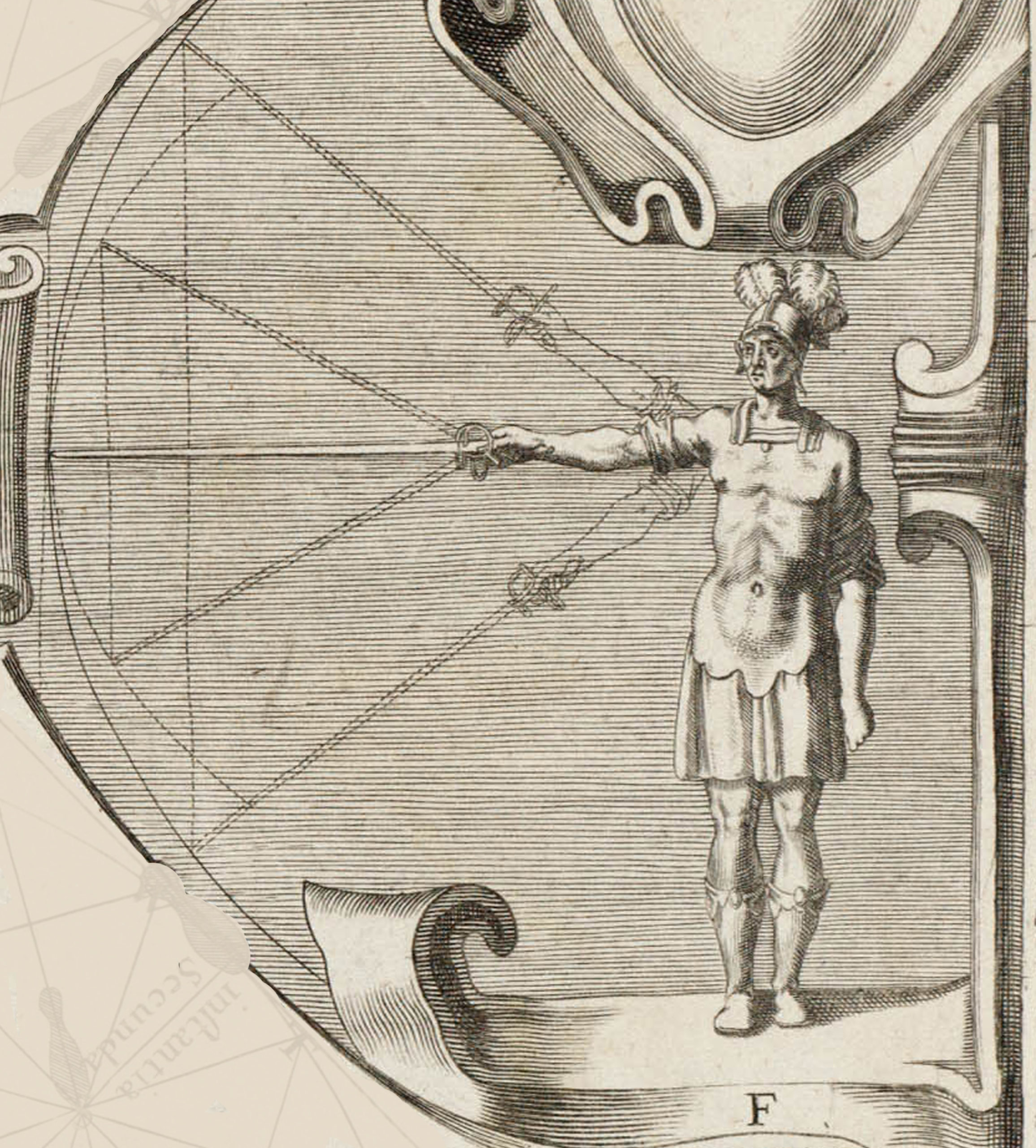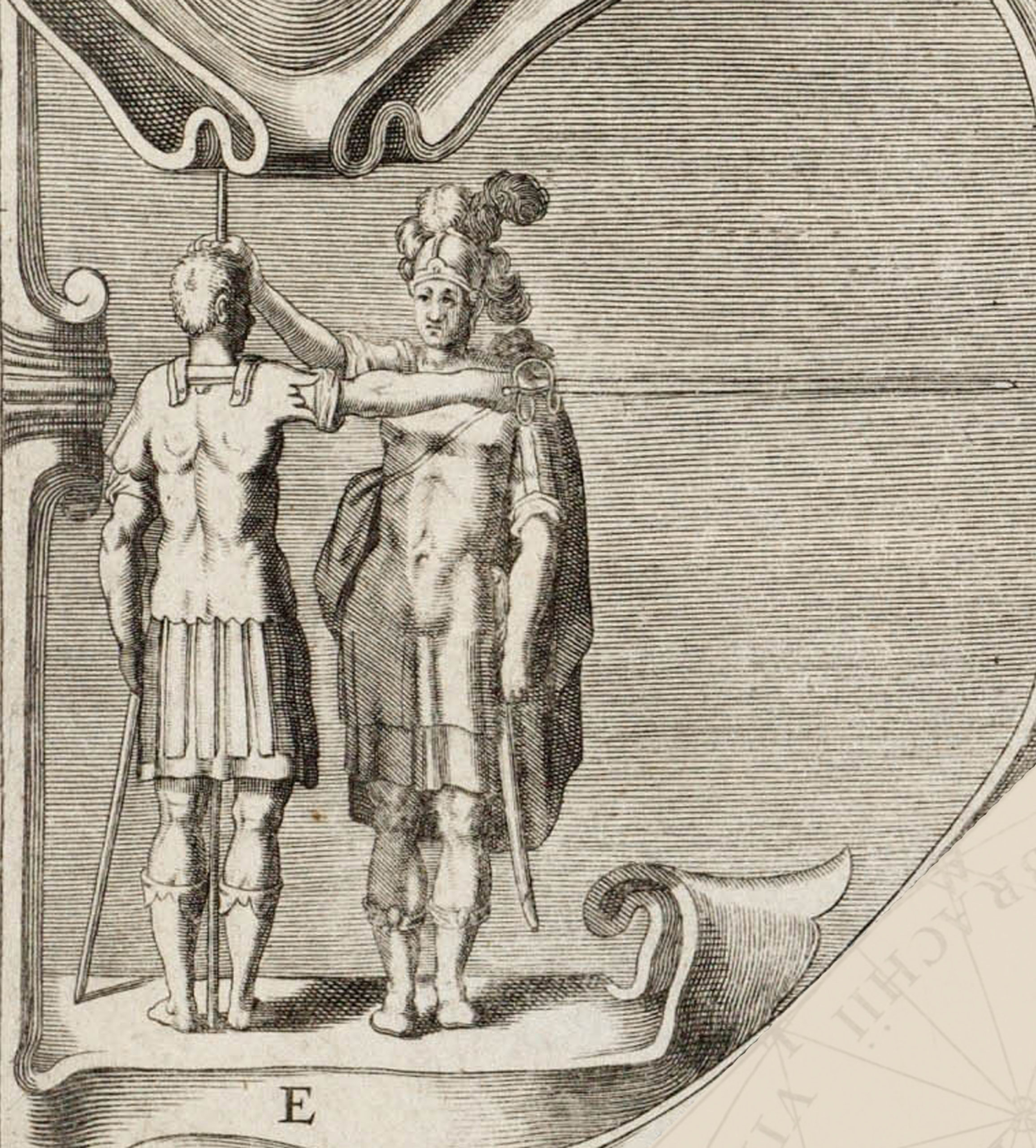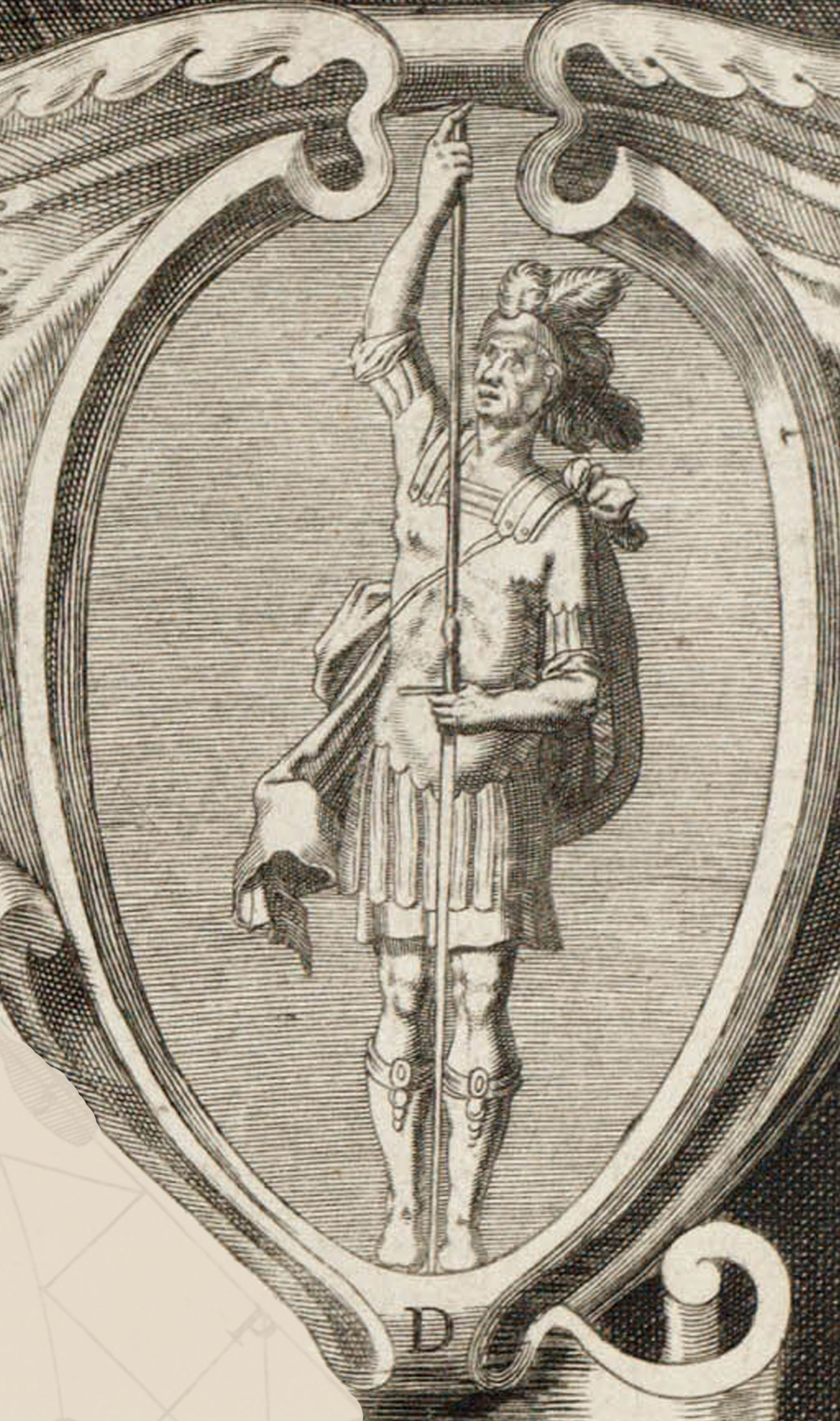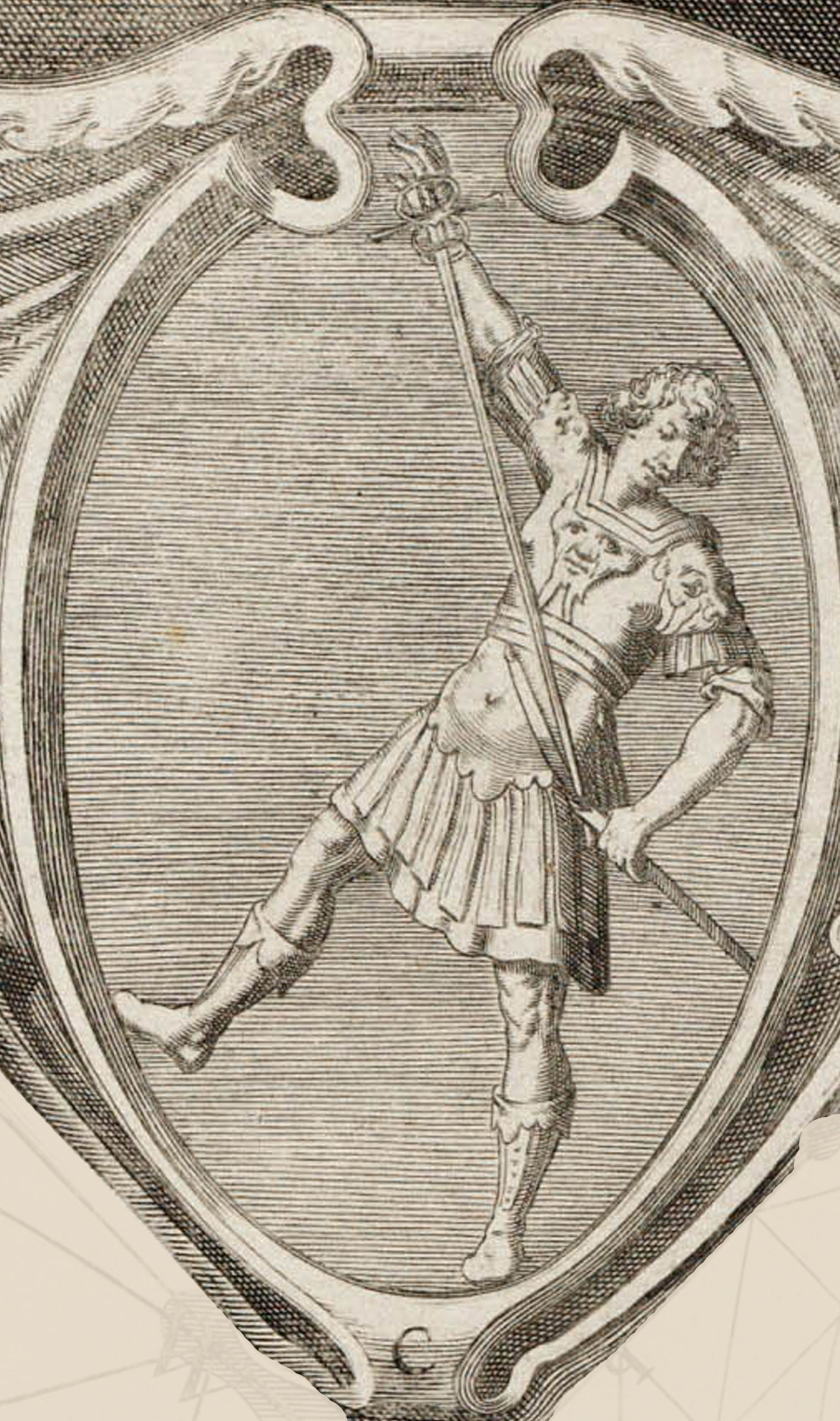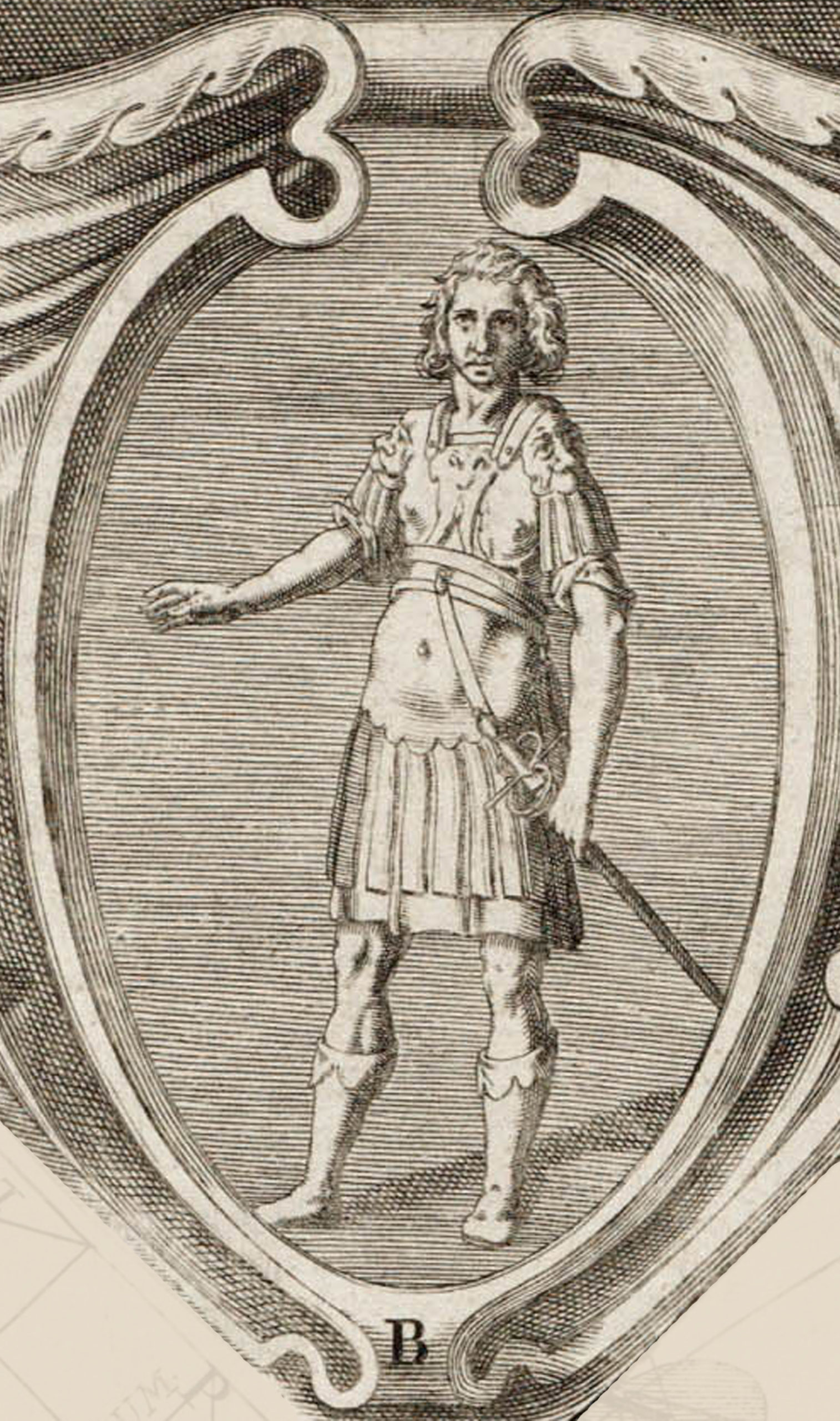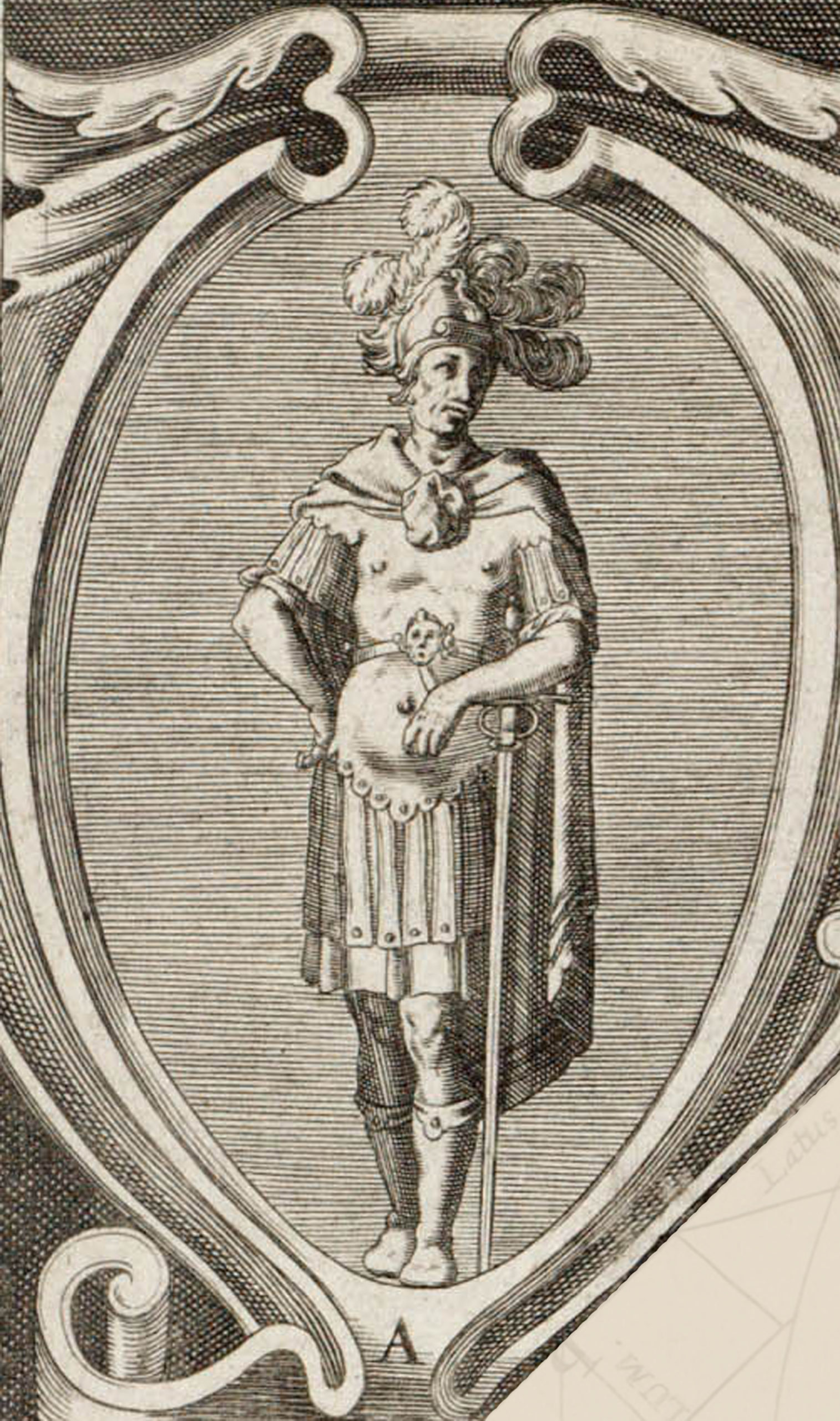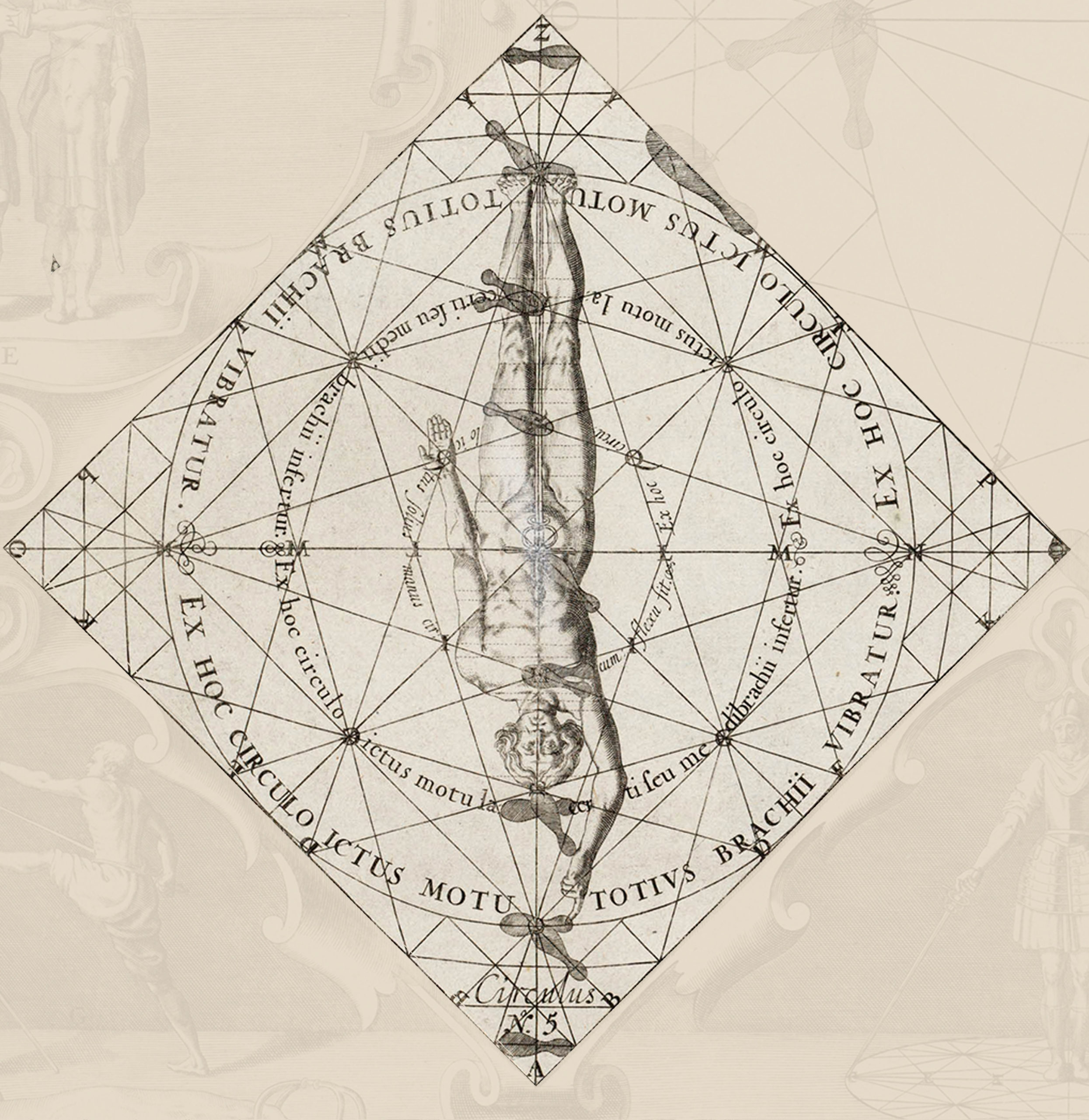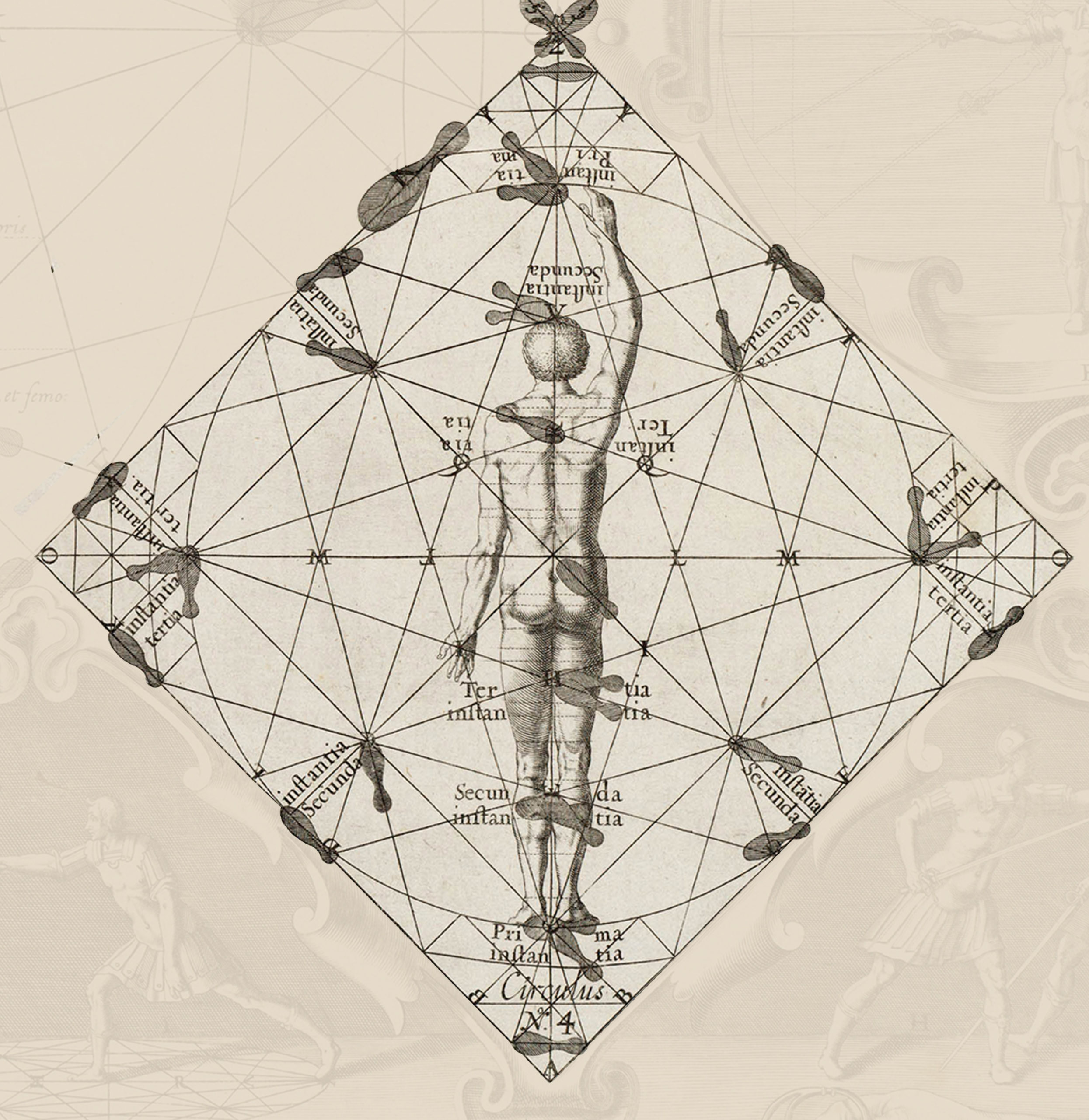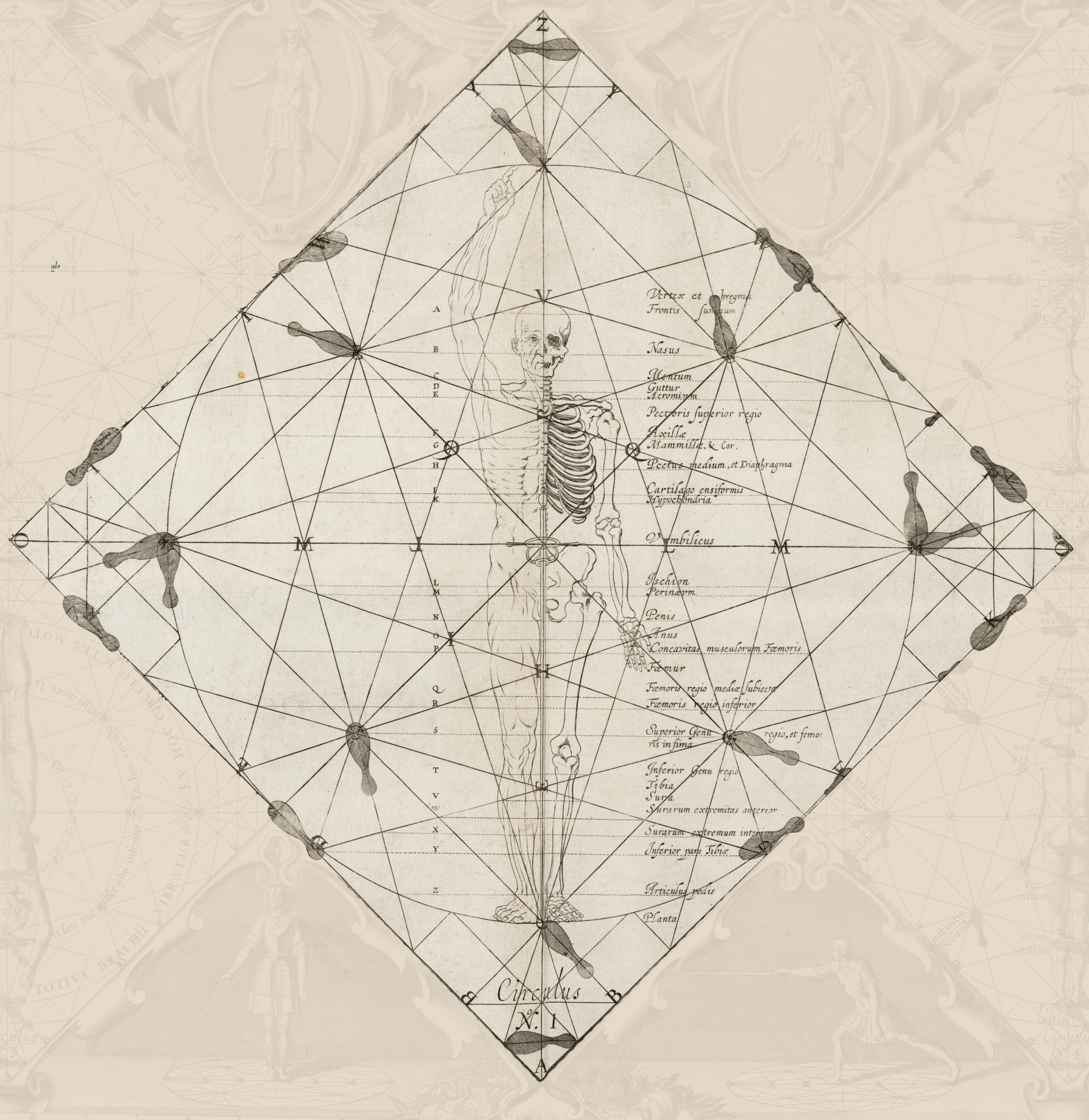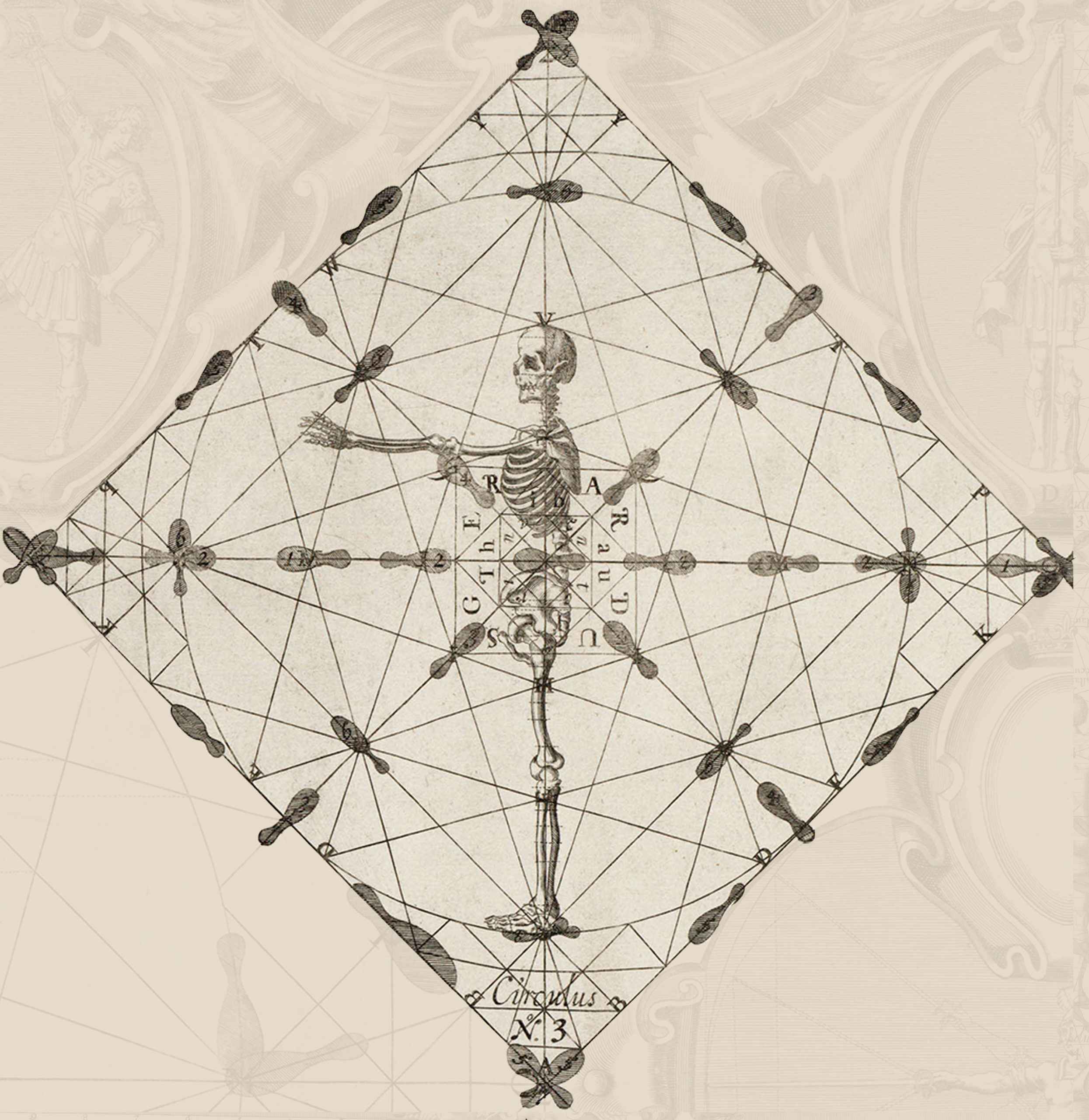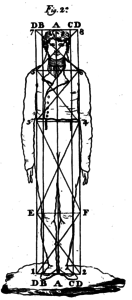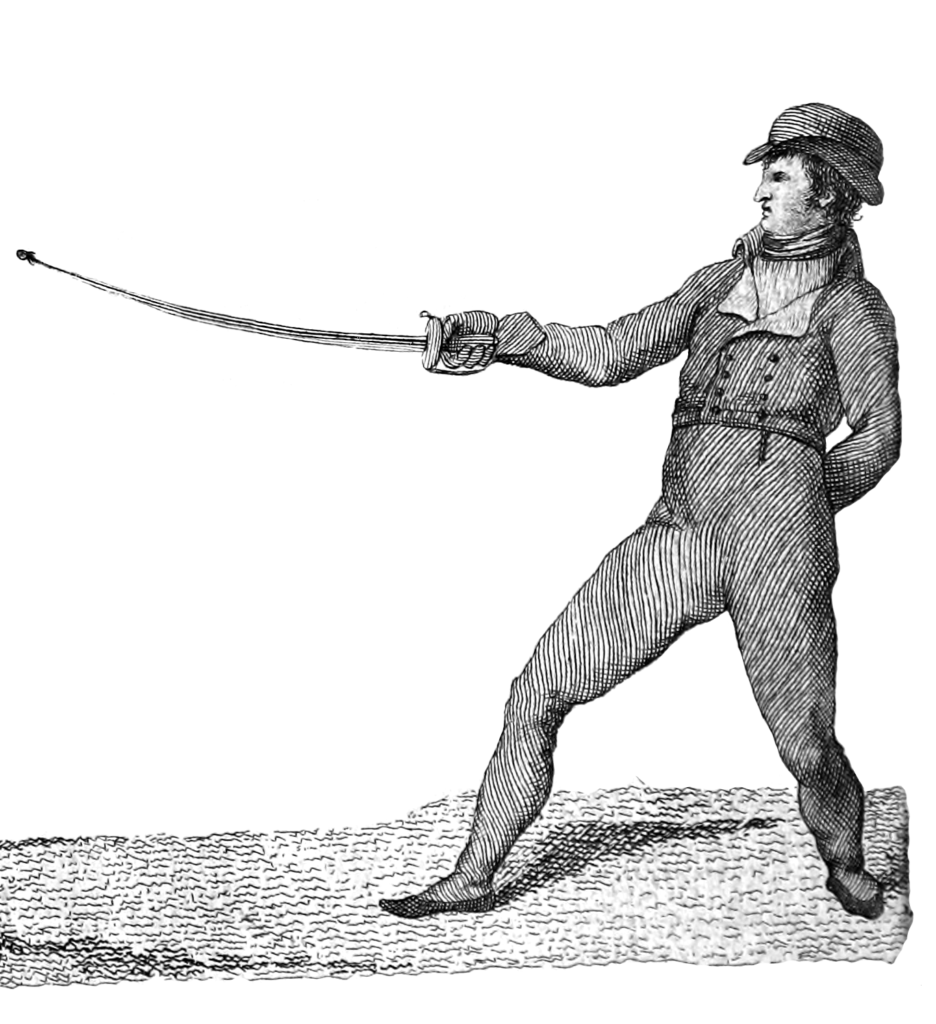First Battle
Thrust of Second, Vertical Cut, and a Thrust of Second
261. For all of the battles of this chapter, assume that the defender is fixed in the guard of sixth and that, as a consequence, the attacker begins a thrust of second. Keep this in mind to avoid repetition. Under that description, the one who removes has repaired with fifth the thrust that was thrown to him stepping and advancing with the left foot, which provides the occasion to leave the line on the right side and throw a vertical to the head, shoulder, or arm.
262. Remove this blow with high first, removing the left foot to the right diagonal with this second. The removal of the same name will be placed to cover the last offense.
Second Battle
Thrust of Second, Diagonal Cut, and a Reverse
263. Suppose the removal of fifth with which the enemy repaired the first thrust with advancement, with the attacker leaving the line on the right side discharging a diagonal cut to the face. Repair this blow with high first to provide the repetition of a cut to the thigh, which is executed with a Spanish leap back. To prevent the effect of this offense, withdraw the leg or extend it.
Third Battle
Thrust of Second, of First, and a Vertical Reverse
264. As a consequence of the fifth with which the fighter repaired the first thrust, free above, balancing to the rear, in order to execute with balance forward another thrust of first, which is repaired with the removal of its name, uncovering the arm enough to inflict on him a vertical reverse, retiring at the same time. This will be repaired with high third.
Fourth Battle
Thrust of Second, Diagonal Cut, and a Reverse
265. The first thrust with which the attacker wishes to strike the defender is accompanied by an advance so that, after the removal is done, leaving the line to the left side, you will execute a diagonal cut to the flank. To repair this cut requires the removal of first, removing the foot on the right diagonal. Conclude this removal inflicting a diagonal reverse to the face, moving square, or jump to the elbow. To elude this last blow, it is necessary to accompany the high third with a prompt motion to square.

